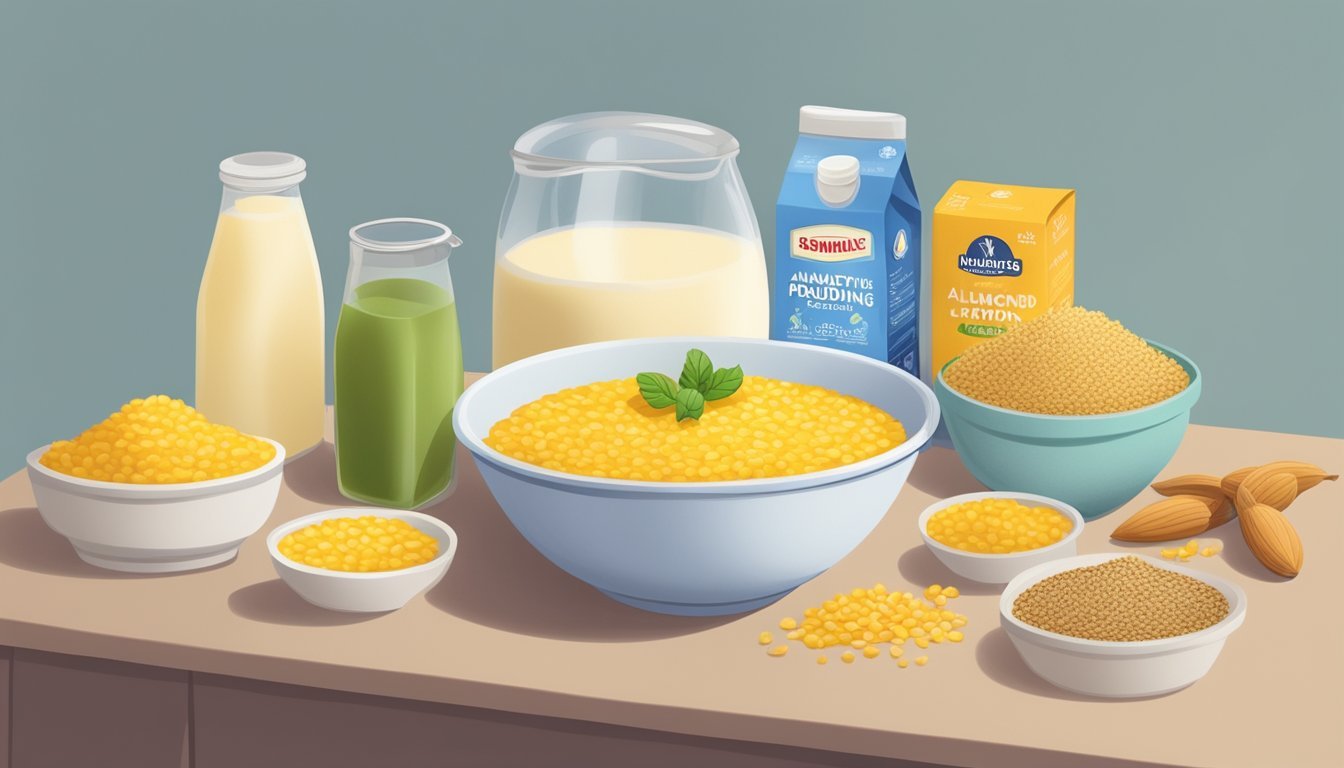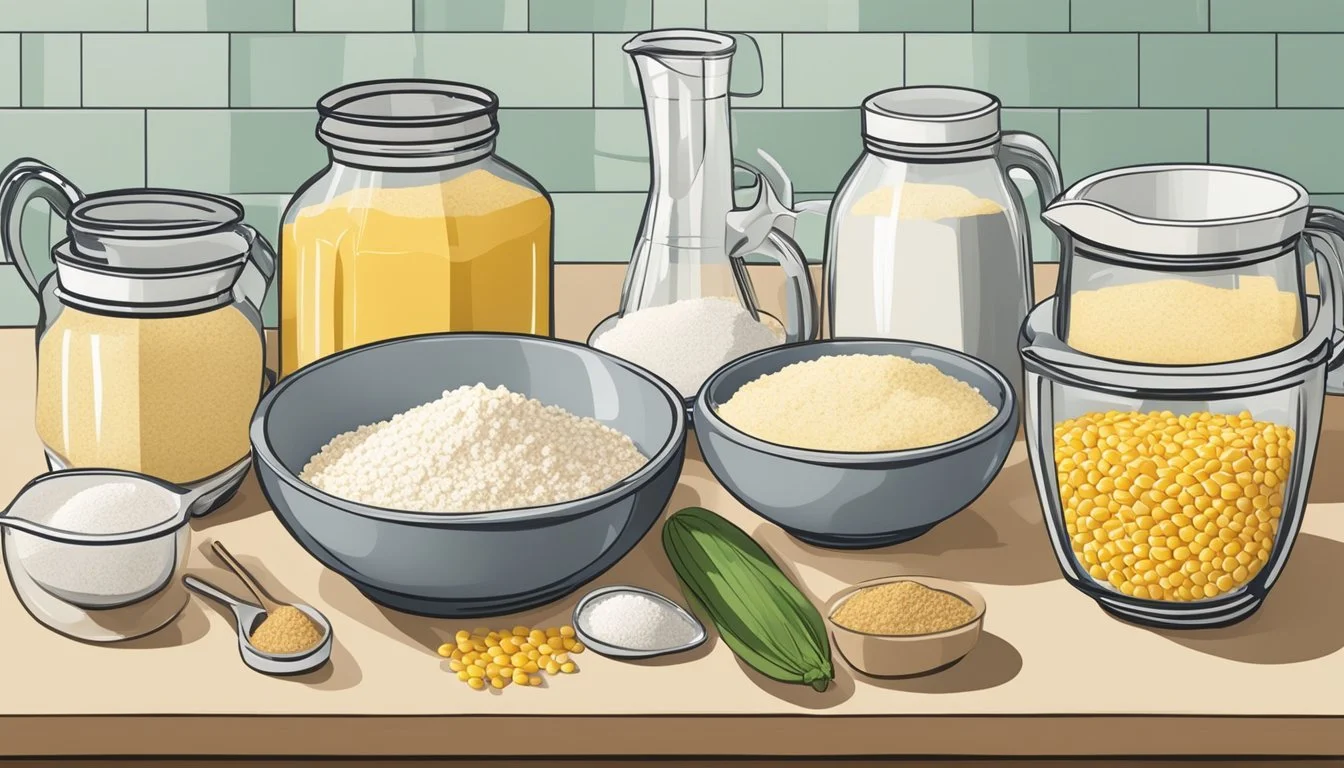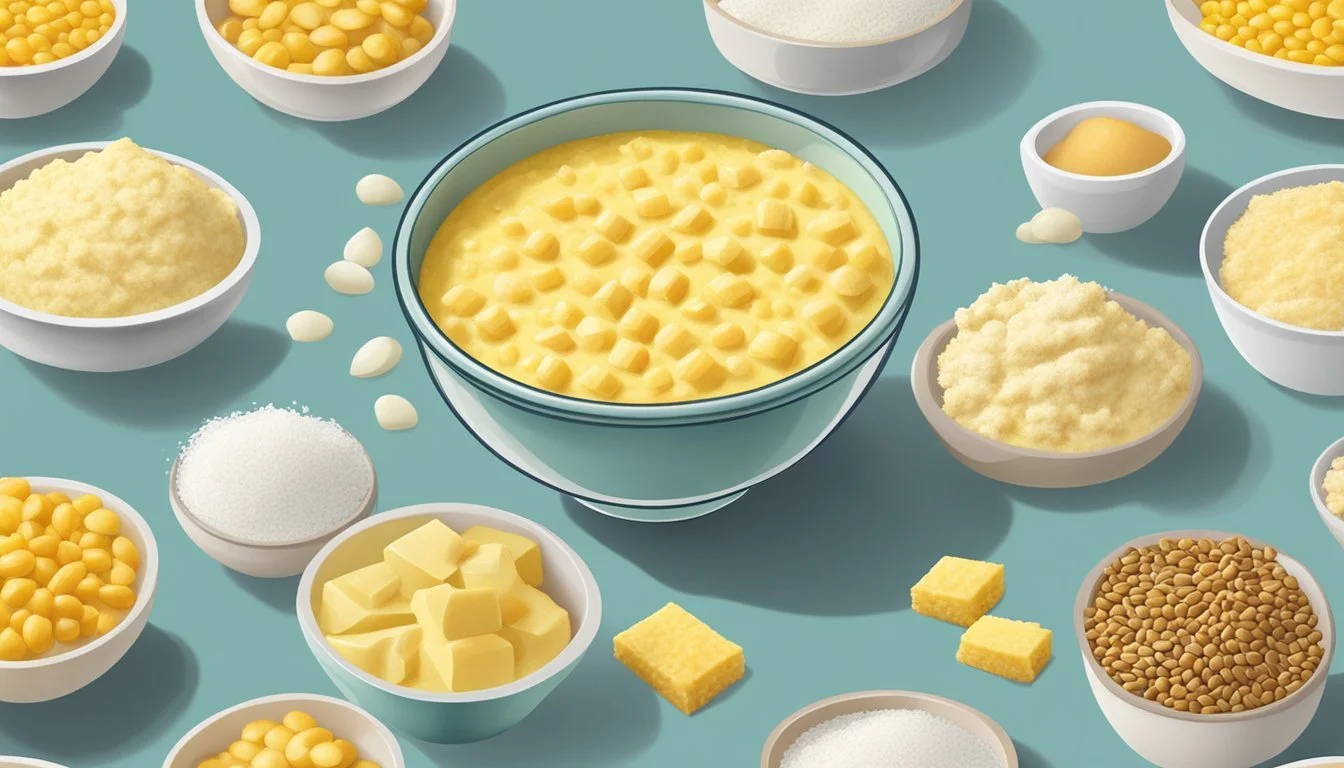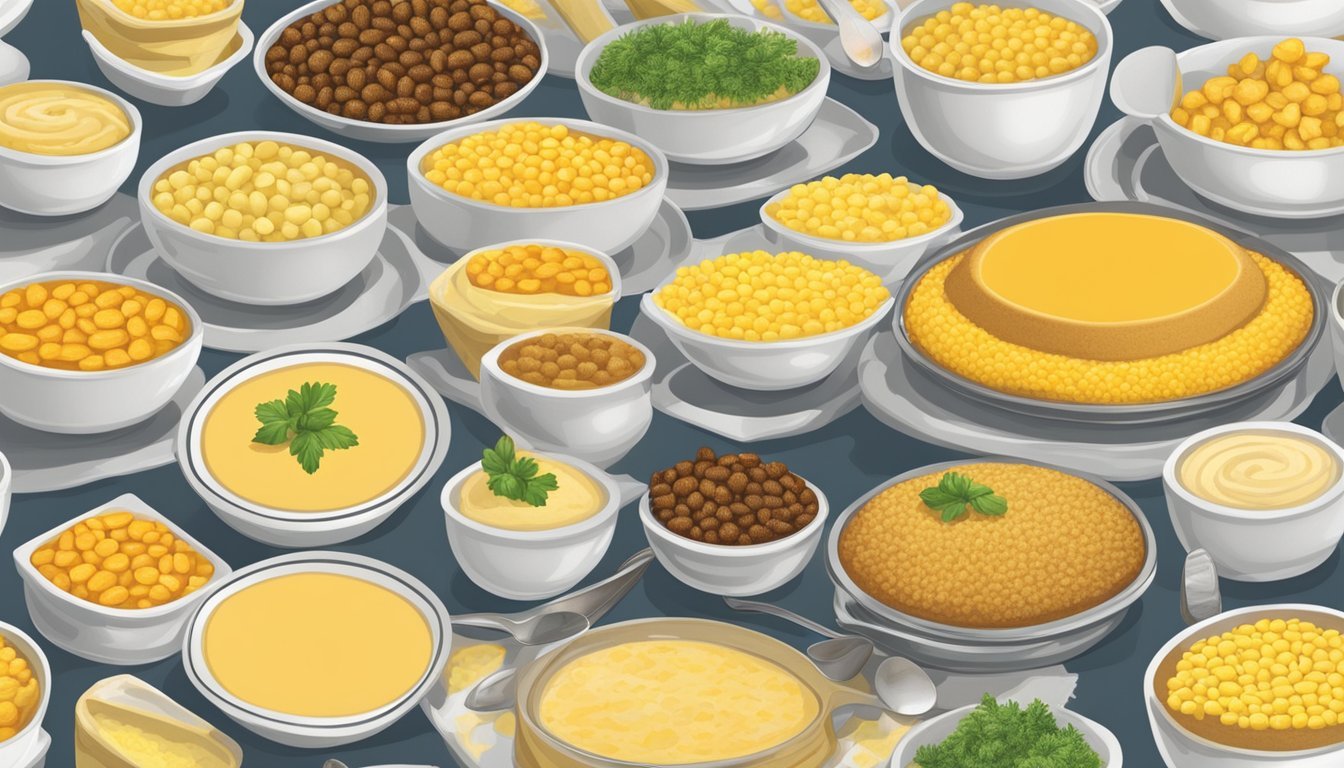Corn Pudding Substitutes
Best Alternatives for Recipes
Corn pudding is a beloved dish known for its creamy texture and sweet flavor. Occasionally, an ingredient called for in a recipe might be out of stock. There are several options available to achieve the desired consistency and taste.
Arrowroot is an excellent substitute for cornstarch in puddings. Its neutral flavor often produces a superior product, making it an easy replacement to consider. Guar gum, derived from guar beans, is another option that adds flexibility and a wonderful texture to gluten-free baked goods, perfect for those with dietary restrictions.
Tapioca and rice flour also present viable alternatives, especially for thickening purposes. Potato starch, commonly used in various baking recipes, can provide that ideal thickness and texture in corn pudding without compromising the dish’s integrity.
Understanding Corn Pudding
Corn pudding is a popular dish known for its creamy texture and sweet flavor. By understanding its key ingredients and the role of cornstarch, you can master the desired consistency and texture for this comforting dish.
Basic Ingredients
Corn pudding typically includes corn, milk, eggs, sugar, and salt. Fresh, frozen, or canned corn can be used, although each type offers slight variations in flavor and texture. Milk and eggs provide the creamy base, while sugar adds sweetness.
Butter and cheese are sometimes included to enhance the flavor and richness. Flour may be used if cornstarch is unavailable, affecting the final texture slightly.
Role of Cornstarch
Cornstarch acts as a critical thickener in corn pudding, ensuring a smooth and cohesive texture. It helps to gelatinize the mixture when heated, binding the ingredients together.
About 1 tablespoon of cornstarch is typically sufficient for most recipes, but adjustments can be made based on desired consistency. Alternatives like arrowroot flour or tapioca starch can be used, each providing unique characteristics to the pudding.
Desired Consistency and Texture
The ideal corn pudding should be creamy yet firm, offering a satisfying bite without being runny. Achieving this consistency involves carefully balancing the wet and dry ingredients and cooking at the correct temperature.
A well-set pudding will have a slight wobble when shaken, indicating it is cooked through but still moist. Overcooking can lead to a dry, crumbly texture, while undercooking may result in a soupy consistency.
Attention to these details ensures a perfect corn pudding every time, showcasing its comforting and indulgent qualities.
Cornstarch Substitutes for Corn Pudding
Cornstarch substitutes for corn pudding vary in their thickening power and flavor profiles. Understanding these alternatives is essential for achieving the desired consistency and taste in the dish. Here are some effective substitutes:
Flour as a Substitute
All-purpose flour is a commonly available substitute for cornstarch when making corn pudding. While it thickens effectively, it requires a larger quantity than cornstarch. Use two tablespoons of flour for every tablespoon of cornstarch needed.
Flour tends to produce a denser texture, which can alter the mouthfeel of the pudding. Despite this, it integrates well, especially in baked puddings where additional texture can be appreciated. Ensure it is cooked thoroughly to avoid any raw flour taste.
Rice Flour Alternatives
Rice flour provides a gluten-free alternative to cornstarch with a neutral flavor. Known for its smooth consistency, it is excellent in clear liquid recipes. Use two tablespoons of rice flour to replace one tablespoon of cornstarch.
Its fine texture lends a delicate finish to corn pudding, maintaining the dish’s creaminess. Ideal in recipes where clarity and lightness are desired, rice flour does not impart any graininess. It's a suitable choice for puddings that require a light, smooth thickening agent.
Tapioca Variants
Tapioca starch or flour works well as a thickener in corn pudding. It provides a glossy finish and smooth texture, similar to cornstarch. Use the same quantity of tapioca starch as you would cornstarch: one-to-one substitution.
This substitute is especially effective in providing a silky texture without altering the flavor. Tapioca is particularly beneficial in recipes needing a thickening agent that remains stable under prolonged cooking times and storage.
Potato Starch
Potato starch is a potent thickener that can replace cornstarch in corn pudding. It has twice the thickening power; hence, use half a tablespoon of potato starch for each tablespoon of cornstarch required.
It blends seamlessly without altering the pudding’s flavor. Potato starch works best in recipes requiring a rapid thickening process and is suitable for those looking for a neutral-tasting thickener that doesn’t compromise consistency.
Arrowroot Applications
Arrowroot powder is another effective substitute for cornstarch in corn pudding. Known for its neutral taste and clear thickening quality, use two teaspoons of arrowroot for each tablespoon of cornstarch.
It produces a smooth, glossy finish and is less likely to break down under acidic conditions compared to cornstarch. Arrowroot does well in maintaining the integrity of the pudding’s texture, making it an excellent choice for those requiring a reliable and transparent thickening agent.
Gluten-Free Alternatives
For those avoiding gluten, several viable options can be used as substitutes in corn pudding recipes. These alternatives maintain the texture and consistency of the pudding without the presence of gluten.
Tapioca Starch for Gluten-Free Pudding
Tapioca starch stands out as a superb gluten-free substitute. This starch, derived from the cassava root, is known for its ability to thicken and stabilize. It provides a smooth, glossy finish to puddings.
Its effectiveness in small quantities makes it economical. To use tapioca starch, substitute an equal amount in place of cornstarch. This ensures the pudding remains creamy while being completely gluten-free.
A bonus is tapioca starch’s availability in most grocery stores, making it accessible for home cooks.
Choosing Arrowroot Powder
Arrowroot powder is another excellent substitute for cornstarch in gluten-free baking. Sourced from tropical plants, arrowroot is highly digestible and imparts a clear, glossy finish to dishes. It works well in corn pudding by enhancing the texture without altering the flavor.
Replace cornstarch with arrowroot powder at a 2:1 ratio. This means using two tablespoons of arrowroot for every tablespoon of cornstarch. Unlike cornstarch, arrowroot performs well in acidic mixtures, ensuring no clumping when combined with ingredients like citrus or dairy.
Its neutral taste makes it a versatile ingredient in many gluten-free recipes.
Other Gluten-Free Options
Several other gluten-free substitutes can also be used in corn pudding. Potato starch offers a similar texture to cornstarch and works well as a thickener. Use it in a 1:1 ratio for cornstarch.
Rice flour can subtly thicken puddings, but should be used sparingly to avoid a gritty texture. Guar gum and xanthan gum are also effective; however, they must be used in minute quantities—usually less than half a teaspoon—as they are potent thickeners.
Another alternative is flax seed flour. When mixed with water, it creates a gel-like consistency that can add body to the pudding. This option is not only gluten-free but also adds fiber and nutrients.
Cooking and Baking Considerations
When substituting ingredients for corn pudding, it's essential to adjust cooking times, consider taste and aroma impacts, and select appropriate substitutions based on the recipe's specific needs.
Adjusting Cooking Times
Different substitutes may alter the consistency and cooking time of your dish. For example, tapioca starch often requires a slightly shorter cooking time compared to cornstarch. Adjust oven temperatures or baking durations accordingly.
When using rice flour or all-purpose flour, it’s crucial to monitor the dish closely as these substitutes can create varying textures. Ensure the pudding is cooked evenly and test with a toothpick to check doneness.
Arrowroot powder is another viable substitute, but it gels quickly. This rapid gelling may necessitate a shorter cooking duration to prevent over-thickening.
Taste and Aroma Factors
Each substitute can impact the overall flavor and aroma of your dish. Arrowroot is generally neutral in flavor, making it an excellent choice for preserving the original taste of the pudding.
Guar gum and tapioca starch also have minimal flavor impacts, but their textural influence is significant. They add smoothness without altering taste, ideal for delicate flavors.
All-purpose flour and potato starch might introduce a subtle flavor that could influence the dish’s final taste. Potato starch, for example, lends a slightly earthy note. Consider these differences when choosing a substitute to maintain the desired flavor profile.
Substitutions for Specific Recipes
Depending on the type of corn pudding recipe, select substitutes that complement the other ingredients. For baked corn pudding, rice flour or all-purpose flour work well due to their ability to create a stable structure.
In puddings that require a smooth, creamy texture, tapioca starch or arrowroot powder are preferable. These ingredients mimic cornstarch’s silky finish.
For gluten-free variations, guar gum and arrowroot are ideal, as they provide the necessary thickening without compromising on the diet requirements.
Carefully select substitutes based on the specific needs of the recipe to ensure the finished product retains its intended quality and taste.
Savory and Sweet Dishes
Corn pudding can be a versatile dish, fitting comfortably into both savory meals and sweet variations. Each type brings out different flavors and textures, making corn pudding a delightful addition to a variety of culinary settings.
Corn Pudding in Savory Meals
Savory corn pudding often accompanies main courses like roasted meats or poultry. The creamy texture pairs well with spicy foods or rich gravies, balancing out the flavors. It can also be enjoyed as a side dish to soups and stews, adding a mildly sweet and hearty element to the meal.
Ingredients like cheese, chives, and peppers are frequently added to enhance the savory notes. Some recipes exclude creamed corn and instead use fresh or frozen corn kernels, which add a bit of crunch. Seasonings such as black pepper, paprika, and even a touch of garlic powder bring out the best in savory corn pudding, making it a versatile complement to various dishes.
Sweet Corn Pudding Variations
Sweet corn pudding variations transform this dish into a comforting dessert. Common sweeteners include sugar, honey, or maple syrup, which highlight the natural sweetness of the corn. This version usually involves a custard-like base, combining eggs, milk, or cream with the corn mixture.
Baking enhances the sweetness and creates a delicate, golden crust. Flavors like vanilla or cinnamon can be added for extra warmth and depth. Some sweet corn pudding recipes may incorporate fruits such as berries or even coconut for a tropical twist. These varieties are perfect for ending a meal with a sweet yet subtle treat.
Pantry Staples and Storage
Choosing the right ingredients and storing them properly can make a significant difference when preparing corn pudding substitutes. Common pantry staples like wheat flour and rice flour are excellent substitutes for cornstarch. Proper storage of these ingredients ensures their longevity and effectiveness.
Stocking Substitute Ingredients
A well-stocked pantry is key for making corn pudding substitutes. Essential items to have include wheat flour, rice flour, and certain white powders like tapioca flour. These staples can often be used interchangeably with cornstarch.
Rice flour is particularly useful for its versatility and similar texture. Wheat flour is another good option but requires careful measurement adjustments since it’s denser than cornstarch. Keeping both in your pantry allows for flexibility when substituting.
Proper Storage Techniques
Proper storage ensures the longevity and quality of pantry staples. Store wheat flour and rice flour in airtight containers to keep them fresh and free from pests. Place these containers in a cool, dry area away from direct sunlight.
Tapioca starch and other white powders should be stored similarly. Labeling containers with purchase or expiration dates helps keep track of freshness. Regularly check for any signs of spoilage or contamination to maintain quality. Promptly discard any compromised ingredients.
Health and Nutritional Information
Corn pudding can be adapted to fit various dietary needs and preferences, catering to both caloric and allergenic considerations as well as specific dietary restrictions and adjustments.
Caloric and Allergenic Considerations
Corn pudding, traditionally made with ingredients like corn, eggs, milk, and sugar, varies in caloric content based on the recipe. Choosing low-fat or fat-free dairy products can substantially reduce the calorie count.
For allergenic concerns, it's important to note that common allergens in corn pudding include dairy and eggs.
Substitutions:
Dairy-Free: Use almond milk or coconut milk instead of regular milk.
Egg-Free: Flax eggs (1 tablespoon ground flaxseed mixed with 3 tablespoons water per egg) can replace eggs.
Dietary Restrictions and Adjustments
Adjustments can make corn pudding suitable for those with dietary restrictions such as gluten intolerance or lactose intolerance.
For gluten-free options, substitute regular flour with almond flour or cornstarch as thickening agents. Most traditional corn pudding recipes are gluten-free by nature if no flour is included.
Lactose-Free: Replace dairy milk with lactose-free alternatives.
Low Carb: Use less corn and add more eggs and dairy substitutes for a lower carbohydrate version.
These modifications ensure that corn pudding remains a flexible dish that can accommodate a range of nutritional needs.








